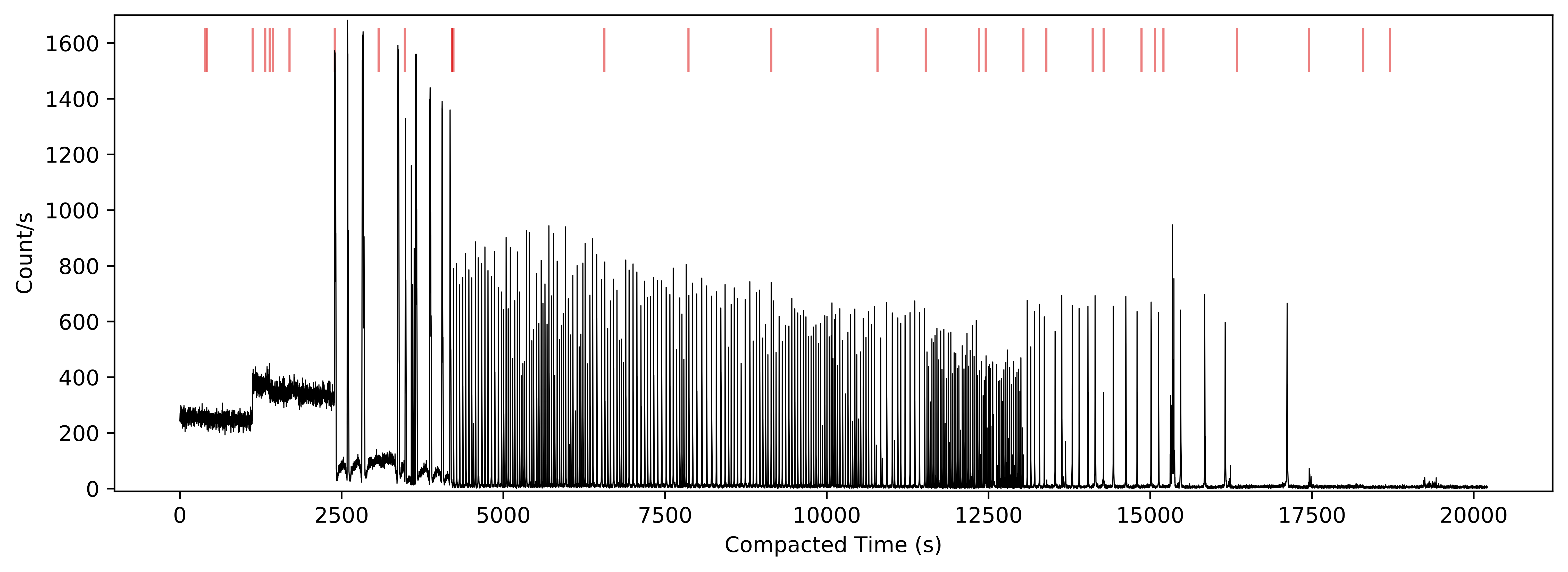NICER / ISS Science Nugget
for April 9, 2020
NICER observes an outburst of the Rapid Burster
The Rapid Burster (also known as MXB 1730-335) is an accreting neutron star in the globular cluster Liller 1. The
source is well known for its unique bursting behavior. In addition to (type I) X-ray bursts due to thermonuclear
explosions on the surface of the neutron star, the Rapid Burster also shows a type of X-ray bursts (type II) that is
caused by a sudden increase in the amount of matter falling onto the neutron star surface. It is one of only two
sources known to show these type II bursts. The origin of the type II bursts is still not fully understood, although it
is suspected that interaction of the accretion flow with the neutron-star magnetic field plays an important role.
In March of this year the Rapid Burster, which is a transient system, went into outburst again. NICER observed the
source for a total exposure of ~20 ks, covering various phases of its month-long outburst. In Figure 1 the full light
curve of the outburst can be seen, showing hundreds of type II bursts. The type II bursts are not present at the
highest and lowest mass accretion rates (i.e. beginning and end of our coverage), and their strength and rate of
occurrence evolves throughout the outburst.

Figure 1:
NICER coverage of the March/April 2020 outburst of the Rapid Burster. The x-axis shows time in seconds with all
time gaps removed (referred to as 'compacted time'). The time gaps are marked with red lines.
In Figure 2 we show a single NICER snapshot from March 2020. It reveals one of the most interesting aspects of
the type II burst behavior: the longer/stronger the burst the longer the wait time for the next burst. This hints at
the presence of a reservoir from which matter can be released (creating a type II burst) and then replenished at a
constant rate, so that the strength of the burst determines the time to refill the reservoir.

Figure 2:
NICER light curve showing a train of type II X-ray bursts from the Rapid Burster.
Using NICER's low-energy band, large collecting area, and high time-resolution, we will be able to better study the
evolution of the accretion flow during the type II bursts and hope to improve our understanding of what makes the
Rapid Burster burst.
<< Previous
Main Index
Next >>